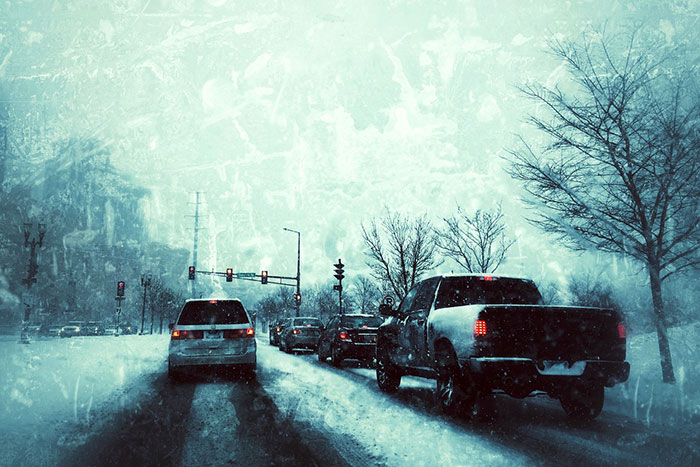Winter can be one of the best seasons of the year in many ways. It’s the time of year when many big holidays happen and a lot of people are in a festive, celebratory mood, eager to spend quality time with friends and family and indulge in all of their favorite things.
However, the coldest season of the year also brings with it a lot of new risks and dangers, especially for road users. While their families may celebrate the arrival of snow and ice, drivers can often feel far less content upon seeing the frosty weather conditions, knowing that their upcoming journeys may be far more treacherous than before.
Reports show that around 70% of the entire US population lives in places that have snowy and icy conditions during the winter months, so many millions of people have to deal with these difficult roads and can struggle with slippery surfaces, poor visibility, and other dangers along the way. Here are some tips for dealing with the risks of winter.
Hail
As well as icy patches on the roads and frequent snowfall, you might also have to contend with hailstorms during the winter months and colder times of the year. Hail can be very dangerous and may actually do real damage to your vehicle, potentially chipping the windows or windscreen and even denting the bodywork or chipping away some of the paint as it falls.
Trying to drive as hail falls can be really risky, not only for the integrity of your vehicle but also in terms of visibility, as it can be quite hard to see the road ahead and vehicles around you when so many large balls of ice are falling from above. So a good way to deal with hail is actually to pull over, preferably getting under some kind of cover if you can, and waiting for the storm to pass before continuing.
Ice
Ice is another major threat on the roads when winter rolls around, and science shows that brake times on icy roads can be up to 10 times longer when compared to the dry, pleasant roads of summer or spring. This means that as you try to slow down or stop your vehicle, the process of actually slowing down will take a lot longer and your car will cover much more distance during that time.
So, a general rule to follow when ice forms is to take it slow. Driving at a slower pace, in general, will allow you to compensate for those longer brake times and react to upcoming hazards or road signs more comfortably too. Experts recommend reducing your average speeds by at least 10mph on icy roads and being more alert and aware of your surroundings too.
Snow
Snow is one of the most exciting parts of winter for many people, especially children who can get very excited at the prospect of snowy fun and games with their friends or snow days off school. Unfortunately, driving in snow is far from a fun and pleasant experience.
Snow can majorly impair your visibility on the roads, making it much more difficult to see the road ahead, respond to upcoming hazards, and adjust your vehicle’s speed and situation to cope with the actions of other road users. Again, driving slowly and taking breaks if the conditions get too bad are useful tips to follow, and you may also want to install snow tires if you’re planning a long trip.
Cold Temperatures
Along with snow, ice, and hail, the fact of the matter is that even the much lower temperatures of winter, when compared to other seasons of the year, can do damage to your vehicle and impact your experiences on the roads. Cars are more likely to have tire pressure problems, frosty windows, or fluid level issues during the winter months, for example.
For this reason, winter car care and maintenance are essential in order to help prepare your vehicle for winter and ease it through the frosty days. It’s also wise to prepare an emergency kit and store it in your car, including blankets and other key items to have nearby in case your vehicle breaks down on the icy roads and you’re left waiting in the cold for help to arrive.
Conclusion
Winter may be an exciting time of year in many ways, but it clearly brings some new risks along with it, and it’s important to respond to those risks in the right ways. Keep these tips in mind and take action when the weather changes to navigate winter’s conditions correctly.


